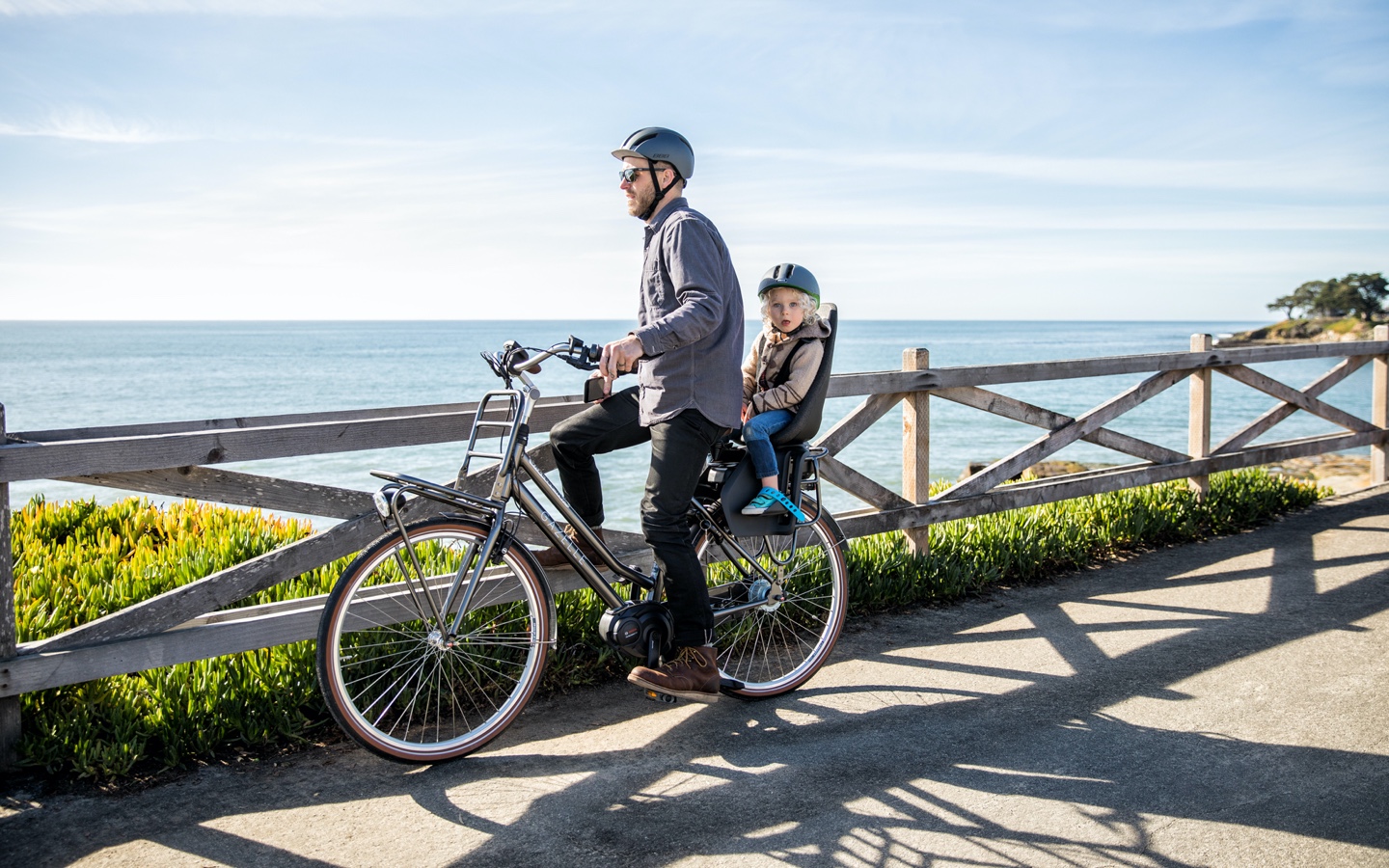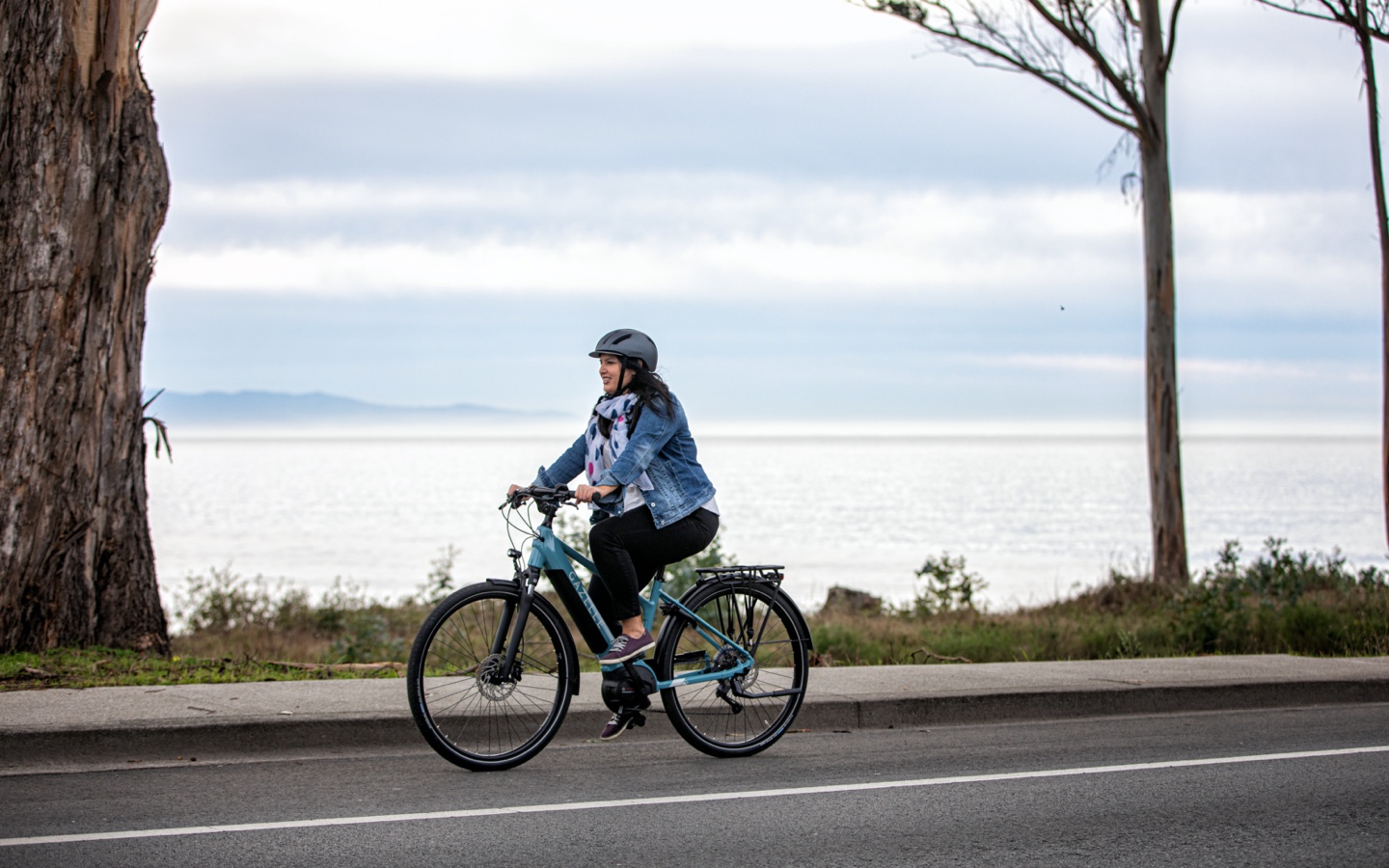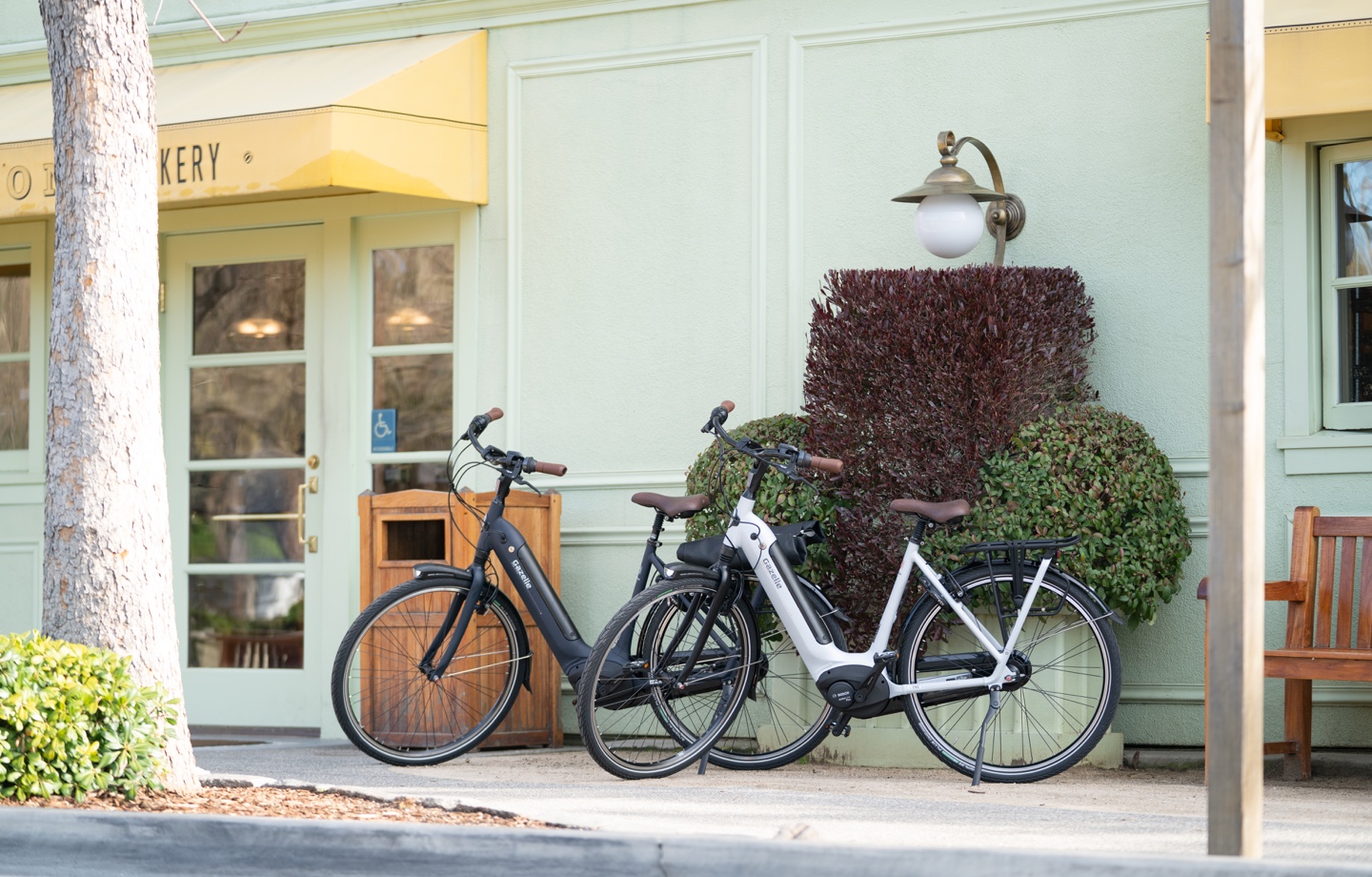E-bike sales are exploding. Efficient, easy, fun, clean — here’s why they’re so great.
The way we move around our cities may fundamentally change forever. Few are traveling to work in the first place. Among those who still have jobs but can’t work from home, public transportation is seen as a last resort. Ridership among subway, bus, ride-share, and taxi services has plunged.
Meanwhile, urban planners are asking bigger questions. How can we create more space to walk, bike, and eat outdoors safely? According to the Verge, in some U.S. cities, multilane roads take up 50 to 60 percent of all real estate. Seattle is permanently closing 20 miles of streets. Boston, Oakland, and others have at least committed to temporarily doing so during the outbreak.

Photo courtesy of Gazelle.
Covid-19 is at the front of everybody’s mind. The impending effects of climate change loom in the background. Is this also an opportunity to reduce our dependence on cars?
A leading vehicle has emerged for this moment. Along with puppies and bidets, e-bikes are thriving right now.
In the Netherlands, they now account for some 40 percent of all bike sales. They’re blowing up in the states now, too. The Verge reported that U.S. retail sales of e-bikes grew 90 percent in the first quarter. A study published in January found that “electric bikes represent the most rapid uptake of alternative fueled vehicles in the history of motorization.” And that was before the pandemic.
For many, because of the “pedal-assist” motor up to 500 watts that helps push the bike up to 20 mph, they aren’t just meant for a joy ride. E-bikes are replacing cars — and buses, too. In Denmark, the aforementioned study found that 37 percent of those they surveyed bought an e-bike to replace their household car. In Shanghai, 51 percent previously traveled by bus. And among nearly 2,000 respondents in Portland, Oregon, e-bike trips replaced 45.6 percent of car trips and 27.3 percent of active transport/public transit trips.
E-bikes aren’t mopeds. They don’t have a throttle. They require pedaling. Most e-bikes have varying levels of speeds that help give you a boost. It’s like riding with a constant, very generous tailwind. E-bikes make bicycling more accessible for everyone. It’s easier to breeze to the office, push a load of groceries home, ride the kids to school, or power up a tough hill.
E-bikes are also ideal for commuting to work — often cutting travel time and eliminating the frustrations of traffic and parking, while also giving the rider some exercise. While an e-bike makes you work, it doesn’t make you work that hard, so you won’t get sweaty on the ride into the office. For older riders, or those with certain disabilities, e-bikes offer a solution to get outside and exercise in a safe, accessible way.

Photo courtesy of Gazelle.
They’re also really fun. Like a beach cruiser with power, they accelerate quickly and feel more comfortable on the road while being easy on the legs and covering greater distances. E-bikes come with removable, rechargeable batteries that typically last up to 100 miles, depending on the level of pedal-assist the rider powers on.
E-bikes have their downsides. We aren’t Scandinavia — many Americans understandably don’t feel safe riding a bike on streets where cars rule the road, which is why urban infrastructure design is so important. Another issue is weight. Some e-bikes are as heavy as 50 pounds. That’s pretty tough if you have a walk-up apartment in New York City. They also cost a lot up front, ranging anywhere from $1,500 to $7,000. That’s as much as a used Civic, though once you add up the costs of gas, maintenance, and parking, the bike could eventually pay for itself, depending on your current commute.

Photo courtesy of Gazelle.
Of course, its cost is only part of the point. Harder to measure are the benefits to your mental and physical health and their negligible environmental footprint. They’re electric, rechargeable. They keep oil in the ground and CO2s out of the air.
Among cycling purists, there’s a prevailing feeling that e-bikes are, somehow, lazy, or, worse, not that cool. But that sentiment is misguided. According to the Guardian, a 2019 study tracked 10,000 people across seven European cities. They found those who rode traditional bikes and e-bikes got the same amount of physical activity. That’s because the impact of the electric assist was cancelled out by the fact that people who ride e-bikes ride longer and more frequently.
That gets to the heart of why they are so great. E-bikes make biking easier. It’s a bike for the masses. Which is why they may just help change the urban transportation experience forever.

Shop Pillows
The Essential Organic Pillow Collection
Gentle, breathable, non-toxic support.






